For most of their long history of habitation, the group of islands collectively known as Matsu (馬祖, just off Chinese-controlled Fujian Province) have remained a quiet, largely forgotten backwater. For a brief but turbulent period in the 1950s, Matsu (along with Kinmen) became a potent worldwide symbol of the bitter fight against communism, but even before the cold war finally wound down in the late 1980s, Matsu was forgotten once more, and remained an unknown quantity to outsiders until after the islands were opened to civilians in the mid-1990s.
The fact that Matsu opened to tourism only about 20 years ago is, of course, one of its great attractions for the curious traveler, together with the hilly, richly scenic landscapes, impressive coastal scenery, traditional buildings that blend harmoniously with the landscape and friendly Hoklo-speaking (also known as Taiwanese) islanders.
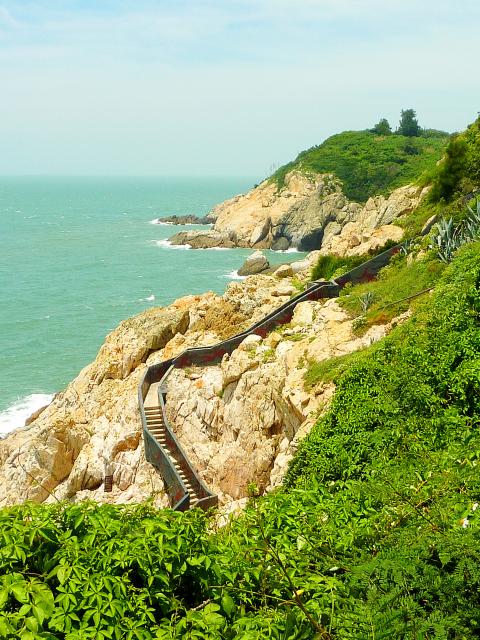
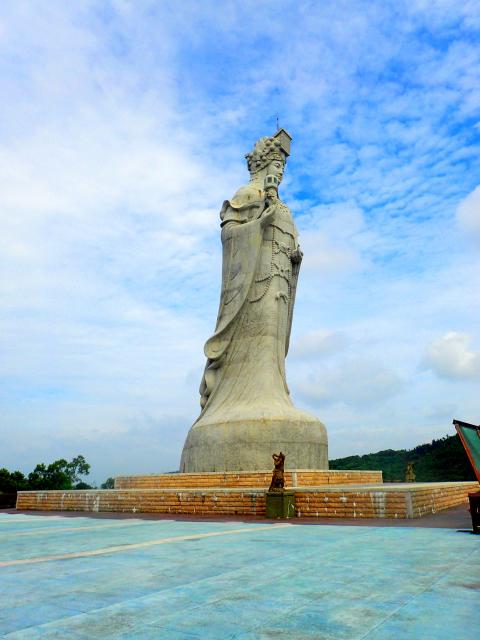
Photo by Richard Saunders
The largest island in the Matsu group, Nangan (南竿), has the best transport connections with Taiwan, with planes from Taipei and a fun overnight ferry service from Keelung. Arriving from either city is quite a surprise, as the island seems to exist in a time-warp, lagging 20 or 30 years behind the rest of the country. In reality, Nangan is by some way the most developed and most densely populated island (take the short ferry ride to neighboring Beigan (北竿), and you’ll immediately feel the difference), but with the widest range of natural, cultural and military sights of the seven accessible Matsu islands, Nangan deserves at least a day of your time.
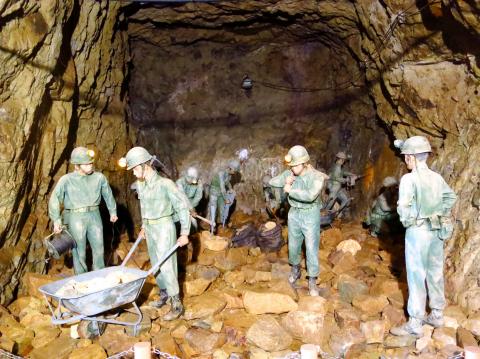
Most visitors arrive by airplane at the airport on the east coast of the island, close to the island’s main village, Shanlung (山隴), which sprawls downhill from a distillery to the coast and an attractive small bay. Beside the road on the way from the airport to the village is Tunnel 88 (八八坑道), originally cut for military use, but now used by Matsu Liquor Factory to age its kaoliang spirit.
Head west from the airport along the main road crossing the hilly spine of the island, rather grandly known as Central Boulevard (中央大道), and follow the signs to Nangan’s biggest tourist attraction, Beihai Tunnel (北海坑道). This is the largest and most impressive of the three flooded subterranean tunnels in Matsu, and a compulsory stop for all visitors, especially since the other two — on Beigan and Dongyin (東引) islands — are now both closed to visitors.
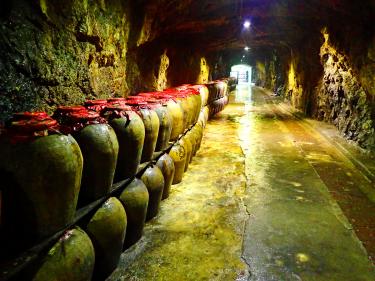
This series of four crisscrossing tunnels took four battalions nearly three-and-a-half years to dig, are about 18m high, 10m wide and 700m long; the water is eight meters deep at high tide. A raised walkway goes right round the outside edge of the four tunnels (a 20-minute stroll), but a more fun way to explore them is by canoe, which can be rented (NT$300 per person for thirty minutes) from a booth at the tunnel’s entrance.
Nearby is the entrance to Dahan Stronghold (大漢據點), a network of (dry) tunnels emerging as gun turrets in the cliffs that command wonderful views over the ocean. Unfortunately they’re much less atmospheric these days, since some bright spark thought fit to supplement the original dim lighting inside with disco-style light strings that now run the length of each tunnel.
West of Beihai Tunnel the coast road narrows and begins to round the island’s southwest, one of the most secluded and scenic areas of Nangan. On the left in a few hundred meters a small parking place beside the road marks the start of the path down the cliffs to the Iron Fort (鐵堡), one of Nangan’s smaller military relics, but also one of the finest, mainly because of its remarkably scenic setting. Most of the fort is burrowed into the rock, and a long passageway connects a kitchen, sleeping quarters, a small shrine dedicated to Sun Yat-sen (孫逸仙) and several tanks for storing fresh drinking water. The unit had its own pet dog, which curiously held the rank of officer, and had his own kennel up on top of the rock.
Continuing along the coast past pretty Jinsha village (津沙), there’s a succession of lovely views over the ocean all the way to Magang (馬港), once the main gateway to Matsu for ships from Taiwan. All ships now land at Fuao Harbor (福澳港) on the north coast of the island instead, and the village has declined in importance; the main reason to linger is to visit Magang Matsu Temple (馬港天后宮), revered as the tomb of the Goddess of Fishermen.
Locals believe that the body of Lin Mu-niang (林默娘), the Fujianese girl who became Matsu after her death, was washed up on the beach here. The tomb lies beneath the floor, under a large plate of glass in front of the altar. This corner of the island is dominated by the huge, gleaming white statue of Matsu, which can be seen from miles away. The great statue, built in 2009, was trumpeted as the tallest statue of Matsu in the world, at 28m tall.
Nangan’s northern coast is blighted a bit by the island’s power station, and by Fuao Harbor, the main hub for sea transport to and around the Matsu islands. If you take the overnight ferry to Matsu from Keelung, you’ll arrive here just after dawn, to be greeted by a large statue of Chiang Kai-shek (蔣介石), and by one of Nangan island’s most famous sights, the huge Always on the Alert wall (福山照壁). This conspicuous white rectangular building is inscribed with the Chinese characters for “Sleeping on Spears, Awaiting the Dawn,” a pointed reminder that Matsu was once a far less soporific place to live than today.
Richard Saunders is a classical pianist and writer who has lived in Taiwan since 1993. He’s the founder of a local hiking group, Taipei Hikers, and is the author of six books about Taiwan, including Taiwan 101 and Taipei Escapes. Visit his Web site at www.taiwanoffthebeatentrack.com.

June 9 to June 15 A photo of two men riding trendy high-wheel Penny-Farthing bicycles past a Qing Dynasty gate aptly captures the essence of Taipei in 1897 — a newly colonized city on the cusp of great change. The Japanese began making significant modifications to the cityscape in 1899, tearing down Qing-era structures, widening boulevards and installing Western-style infrastructure and buildings. The photographer, Minosuke Imamura, only spent a year in Taiwan as a cartographer for the governor-general’s office, but he left behind a treasure trove of 130 images showing life at the onset of Japanese rule, spanning July 1897 to

One of the most important gripes that Taiwanese have about the Democratic Progressive Party (DPP) is that it has failed to deliver concretely on higher wages, housing prices and other bread-and-butter issues. The parallel complaint is that the DPP cares only about glamor issues, such as removing markers of Chinese Nationalist Party (KMT) colonialism by renaming them, or what the KMT codes as “de-Sinification.” Once again, as a critical election looms, the DPP is presenting evidence for that charge. The KMT was quick to jump on the recent proposal of the Ministry of the Interior (MOI) to rename roads that symbolize

On the evening of June 1, Control Yuan Secretary-General Lee Chun-yi (李俊俋) apologized and resigned in disgrace. His crime was instructing his driver to use a Control Yuan vehicle to transport his dog to a pet grooming salon. The Control Yuan is the government branch that investigates, audits and impeaches government officials for, among other things, misuse of government funds, so his misuse of a government vehicle was highly inappropriate. If this story were told to anyone living in the golden era of swaggering gangsters, flashy nouveau riche businessmen, and corrupt “black gold” politics of the 1980s and 1990s, they would have laughed.
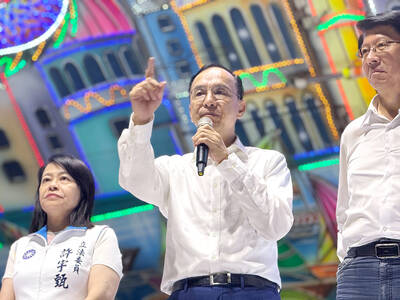
In an interview posted online by United Daily News (UDN) on May 26, current Chinese Nationalist Party (KMT) Chairman Eric Chu (朱立倫) was asked about Taichung Mayor Lu Shiow-yen (盧秀燕) replacing him as party chair. Though not yet officially running, by the customs of Taiwan politics, Lu has been signalling she is both running for party chair and to be the party’s 2028 presidential candidate. She told an international media outlet that she was considering a run. She also gave a speech in Keelung on national priorities and foreign affairs. For details, see the May 23 edition of this column,